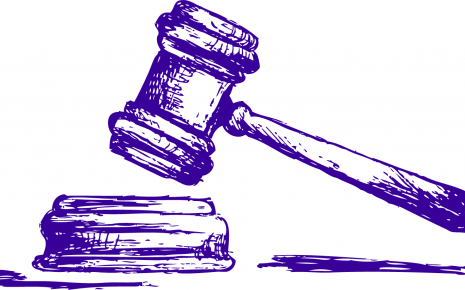Case Analysis on Aruna Shanbaug v/s Union of India
Aruna Shanbaug v/s. Union Of India[3]
[4] also called the Aruna Shanbaug case, it is a landmark judgment that has drawn attention to the issue of passive euthanasia. the journalist and the Activist who identified herself as a close friend of the victim filed a petition under Article 32[5] of the Constitution although there was no legality of filling the petition under Article 32 but owing to the seriousness of the situation and the related public interest of determining the legality of euthanasia the petition was accepted by the Supreme Court. The petition prayed to the Respondent to stop feeding Aruna and allow her to die peacefully.
The Supreme Court recognized the need for a legal framework to deal with euthanasia and it laid down the procedure for the process of passive euthanasia. The court permitted the withdrawal of the life support system or medical treatment for patients who were in a permanent vegetative state or suffering from an irreversible terminal illness with no hope of recovery.
Furthermore, the Supreme Court established a mechanism for such cases where the High Court's permission would be required before euthanasia and the High Court has to ensure a rigorous evaluation of the process in order to prevent the misuse of the judgment. This decision set an important precedent in Indian law and sparked discussion about the ethical, moral, and legal aspects of euthanasia and end-of-life care.
Citation: 2011 (4) Scc 454
Court: Supreme Court Of India
Bench:
- Justice Markandey Katju
- Justice Gyan Sudha Mishra
Facts Of The Case
Aruna Ramchandra Shanbaug was employed at King Edward Memorial Hospital as a nurse, the hospital was located in Mumbai. On 27th November one of the sweepers of the hospital attacked Aruna. He further strangulated and choked her with the help of the dog chain in order to prevent her movement and he could commit rape on her. Once he discovered that she was menstruating then he did anal penetration instead.
The following morning one of the cleaners at the hospital discovered her lifeless corpse covered in blood on the floor. To the abovementioned occurrence, 36 years have passed and since then she is unable to move her hands and legs and is surviving on mashed foods and it was directed by doctors that she has no chance of recovery and hence she was totally dependent on the KEM hospital in Mumbai.
Later the journalist and the Activist who identified herself as a close friend of the victim filed a petition under Article 32 of the Constitution although there was no legality of filling the petition under Article 32 but owing to the seriousness of the situation and the related public interest of determining the legality of euthanasia the petition was accepted by the Supreme Court. The petition prayed to the Respondent to stop feeding Aruna and allow her to die peacefully
Issue Raised By The Court
- Whether Article 21[6] of the Indian Constitution include the Right to die embedded within the Right to Life?
- What is the difference between passive and active euthanasia?
- Whether a person incapable to provide consent, be bestowed non-voluntary passive euthanasia?
- Whether suicide should be considered as a crime under Section 309[7] of IPC?
Petitioner's Argument
A petition was filed by the journalist and the Activist Ms. Pinki Virani who identified herself as a close friend of the victim under Article 32 of the Indian Constitution. The petitioner contended that the Right to life under Article 21 includes the Right to life with the utmost dignity and therefore it includes the Right to die with dignity as well.
Any person who is suffering from an ailment that is terminal in nature or is in permanent vegetative condition than such person should have the right to die with the utmost dignity and the same should be included in the ambit of Article 21 in order to end the prolonged suffering and agony of the patient.
The petitioner further contended that the victim Aruna lacks consciousness and is aware of the surroundings, she is even not able to chew her food, she is in a state where she cannot even express her own emotions and it has been 36 years past that she is bedridden and there is no scope or hope for her improvement so the hospital staff by not feeding her will not be killing her but just only helping her to die peacefully.
Arguments Respondent's
The respondent (the dean of the hospital) opposed the idea of euthanasia and he contended that almost 36 years have passed and the staff of the hospital is duly taking care of her basic necessities, he further contended that the hospital staff in the future will also take care of her willingly and he added that the victim is already 60 years of age and in future she would naturally succumb to death and hence there is no requirement of euthanasia.
They plead that the staff looking after the victim has developed a close bond and an emotional connection and one of the staff has developed such an emotional connection with Aruna that she is ready to take care of her without any remuneration. They further prayed that euthanasia is an abuse of justice and that legalization of passive euthanasia would result in abuse by the family members and relatives and hence culminating the kindness, love from the society.
Every person in the country has the Right to Life by virtue of Article 21 and nobody has the right to take it away, the word euthanasia in itself means taking away the life of the living creature and hence it is immoral and inhuman. Further, the victim is not in the condition to give consent for the withdrawal from the life support system so the question laid down by the respondents was who would give the consent on behalf of/ for Aruna (victim).
Ratio Decidendi
The apex court gave the following reasons for its judgment:
- It is a well-settled principle all around the globe that passive euthanasia is illegal until and unless there is legislation that is permitting the same and on the other hand passive euthanasia is legal even without the legislation.
- The Report presented by the expert panel of the doctor (under Section 45 of the Indian Evidence Act) certifies that the patient is not brain dead and it was submitted in the report that the patient expresses her likes and dislikes via small gestures and sounds, she smiles and blinks and even responds to the outside environment and even to her surrounding as well.
- The court was also of the opinion that due to a decrease in the ethical standard and increasing corruption in society, there is a threat that can lead to the misuse of passive euthanasia and which will result in the infringement of the Article 21 of the Constitution which Right to life with utmost dignity. So the court was of the opinion that the balanced approach should be adopted in the sensitive issue where there is a matter of one's life and death.
- The bench was also of the opinion that Section 309 of IPC should be scraped out as they believe a person undergoing depression committing suicide needs help and not punishment.
- The High Court under Article 226[8] would be entitled to make decisions regarding the withdrawal of the life support system. A bench must be constituted by the Chief Justice of the High Court when an application is received, before which a committee of three reputed doctors nominated must be referred. There should be a thorough examination of the patient and state and family members are provided with a notice issued by the bench. The High Court must give a speedy decision. Such a judgment has legalized passive euthanasia in India under certain conditions that the High Court shall fix.
Case Analysis
The court analyzed that there are two types of euthanasia:
- Active Euthanasia - where a person is killed by a deadly means such as a fatal injection given to a cancer patient who is in agony.
- Passive Euthanasia - when life-sustaining medical care is withheld or withdrawn such as withholding the antibiotics when a patient would die without them or withdrawing the patient's heart and lungs machine from coma.
Right To Die
The citizens of India have the Right to life as guaranteed by the Constitution of India. When it comes to the right to life, there is no conflict and this is an absolute right. But whenever the right to die comes into the picture then there are always questions that are imposed on Article 21 of the Constitution because our drafters have never pondered upon this question. It has been dealt with by the courts in various judgments.The legality of Section 306[9] of the IPC, which punished aiding in suicide, was contested in the case of Gian Kaur v. State of Punjab[10], this case overturned P. Rathinam v. Union of India[11] but the court stated that "a patient who is terminally sick or who is in the Permanent Vegetative State has the right to die, not by ending their life prematurely, but by quickening the process of death that has already started. Furthermore, it was argued that in order for someone to die with dignity as opposed to continuing to suffer bodily and emotional anguish they must also have the right to live with dignity".
In the case of State of Maharashtra v. Maruti Sripati Dubal[12], the Bombay High Court ruled that "Article 21's right to life also includes the right to die. It was argued that as Section 309 of the Indian Penal Code (attempt to commit suicide) violates Article 21 of the Constitution, it is thus illegal".
In its various ruling, the court made it very clear that the right to die is only unusual, not against nature. Then the Supreme Court subsequently acknowledged that Article 21 not only includes Right to Life but also includes within it the scope of Right Not to Live.
Right To Euthanasia
Euthanasia also known as mercy killing, is the act or practice of putting to death without suffering those who have a physically debilitating illness or agonizing, incurable condition, or allowing them to pass away by withholding treatment or removing artificial life support.They are of two forms:
- Active Euthanasia
- Passive Euthanasia
Active Euthanasia is the use of some hazardous substance or lethal methods to kill a person. Passive Euthanasia is stopping some medical treatment without which the person would die. The former is the direct killing of an individual whereas the latter is the indirect killing of an individual.
Passive Euthanasia is further classified into two:
- Voluntary:
When the patient himself gives consent to administering passive euthanasia. - Involuntary:
When the patient is incompetent to give consent the consent is given by the patient relative or someone on behalf of the patient.
Report of the Law Commission on Euthanasia:
The Legislation Commission of India issued its 196th Report in 2006[13], which made the recommendation that "a law be passed to shield terminally ill individuals from Section 309 of the Indian Penal Code if they refuse medical care, artificial feeding, or hydration. Additionally, clinicians who follow a patient's decision or make decisions for incompetent patients in their best interests shall be shielded from legal action under Section 306 of the IPC (abetting suicide) or Section 299 of the IPC (culpable homicide). Additionally, any medical actions must be deemed lawful".
Disguised Evidence.
Aruna Shanbaug was raped that evening at the hospital after changing her uniform in one of the empty operating rooms which has nowhere been mentioned by the police officer which is something that is not in the knowledge of the many people. After a "finger test," Shanbaug's medical examination attested that she has not lost her virginity and that it was still intact, but the court never considered the fact that she had been sodomized and the accused was never accused of rape, despite the fact that the verdict said that "the accused had gone there with the purpose to rape". The accused was found guilty of offenses such as robbery and attempt to murder[14].
Harmonious Construction of Statutes:
The Supreme Court of India employed the principle of harmonious construction in interpreting the relevant provisions of the Indian Penal Code and the Constitution of India. Harmonious construction is a legal principle that aims to reconcile seemingly conflicting or ambiguous provisions within a statute to give effect to the overall legislative intent. When faced with statutory provisions that appear to be in conflict or inconsistent with each other, the court strives to harmonize them in a way that upholds the legislative purpose and avoids rendering any provision redundant or meaningless. This approach ensures that statutes are interpreted in a manner that best serves the overall objectives of the legislation.
The court faced the challenge in reconciling the provisions of the Indian Penal Code that dealt with euthanasia and end-of-life care. It carefully examined the relevant sections, including Section 309 (criminalizing attempted suicide) and Section 304 (dealing with culpable homicide not amounting to murder), to determine their applicability and scope.
To harmonize these provisions, the court engaged in a comprehensive analysis of their language, scope, and underlying objectives. It aimed to give effect to both provisions while ensuring that the legislative intent behind each provision was respected. The court emphasized the importance of interpreting statutes in a manner that avoids rendering any provision redundant or superfluous. It sought to strike a balance between the prevention of self-harm and the protection of life, on the one hand, and recognizing the right to die with dignity and respecting personal autonomy, on the other hand.
By employing harmonious construction, the court was able to navigate the complexities of the legal framework surrounding euthanasia and end-of-life care. It struck a balance between the protection of life and the recognition of an individual's right to die with dignity, contributing to the development of a legal framework that addresses the sensitive issue of end-of-life decision-making.
Conclusion
The Aruna Shaunbay v Union of India case stands as a crucial milestone in India's legal history, particularly in the context of euthanasia and end-of-life care. This landmark judgment brought attention to the plight of Aruna Shanbaug and sparked a nationwide debate on the ethical, moral, and legal aspects of passive euthanasia.
The Supreme Court's decision to allow passive euthanasia in specific circumstances, such as when an individual is in a persistent vegetative state or suffering from an irreversible terminal illness, reflected a recognition of the right to die with dignity. The court's guidelines ensured that the process of granting euthanasia would be subject to rigorous evaluation and oversight, thus safeguarding against potential misuse.
Moreover, the Aruna Shaunbay case highlighted the need for comprehensive legislation on euthanasia and end-of-life care in India. It prompted further discussions at the legislative level and emphasized the importance of providing compassionate choices for individuals facing irreparable suffering. Beyond its legal implications, the case had a profound impact on society, fostering greater awareness and empathy for those in similar circumstances as Aruna Shanbaug. It encouraged individuals, medical professionals, and policymakers to reflect on the complex issues surrounding end-of-life decisions and the importance of respecting a person's autonomy and dignity.
While the case provided a crucial framework for addressing passive euthanasia in the country, the discourse on euthanasia and end-of-life care continues to evolve. As society grapples with the challenges posed by advancing medical technologies and changing attitudes, it is vital to ensure that legal and ethical frameworks remain responsive to the needs and values of the individuals they seek to protect.
Ultimately, the Aruna Shaunbay case serves as a reminder that compassionate and carefully regulated approaches to end-of-life care are essential. It urges us to continue exploring ways to strike a balance between the sanctity of life and the individual's right to die with dignity, fostering a society that values and protects the autonomy and well-being of its citizens until the very end
End-Notes:
- *
- *
- (2011) 4 SCC 454.
- Id.
- The Constitution of India, art 32.
- The Constitution of India, art 21.
- The Indian Penal Code 1860, s.309
- The Constitution of India, art 226.
- The Indian Penal Code 1860, S.306
- (1996) 2 SCC 648.
- (1994) 3 SCC 394.
- (1987) 1 Bom CR.
- Law Commission of India, 196th report on Medical treatment to terminally ill patients (protection of patients and medical practitioners) March, 2006, http://lawcommissionofindia.nic.in/reports/rep196.pdf.
- Sandip Roy The rapist who never was: Let's not forget the man who destroyed Aruna Shanbaug's life, first post.
- Garvita Garg - Law Student at Delhi Metropolitan Education, 4th Year
- Sanskar Pradhan - Law Student at Delhi Metropolitan Education, 4th Year
Law Article in India
Legal Question & Answers
Lawyers in India - Search By City
LawArticles
How To File For Mutual Divorce In Delhi

How To File For Mutual Divorce In Delhi Mutual Consent Divorce is the Simplest Way to Obtain a D...
Increased Age For Girls Marriage

It is hoped that the Prohibition of Child Marriage (Amendment) Bill, 2021, which intends to inc...
Facade of Social Media

One may very easily get absorbed in the lives of others as one scrolls through a Facebook news ...
Section 482 CrPc - Quashing Of FIR: Guid...

The Inherent power under Section 482 in The Code Of Criminal Procedure, 1973 (37th Chapter of t...
The Uniform Civil Code (UCC) in India: A...

The Uniform Civil Code (UCC) is a concept that proposes the unification of personal laws across...
Role Of Artificial Intelligence In Legal...

Artificial intelligence (AI) is revolutionizing various sectors of the economy, and the legal i...








Please Drop Your Comments